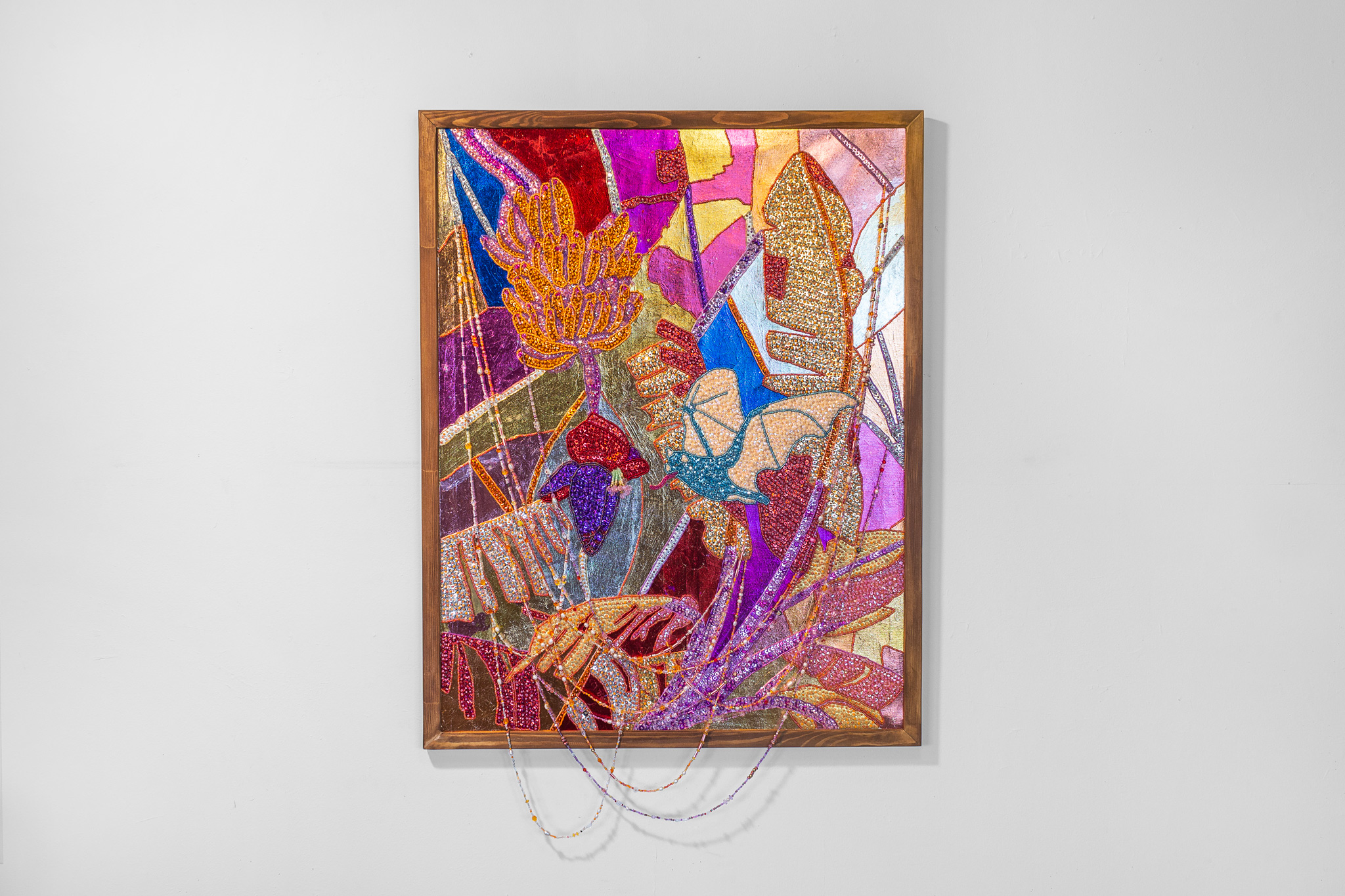 Seres de Luz: el Murciélago, 2025.
Seres de Luz: el Murciélago, 2025.
Glass beads, sequins, freshwater pearls embroidered on multicolor gold-ground canvas; stained pine wood frame.
93x73cm.
Seres de Luz
Seres de Luz is a series of portraits that worship non-human species. Drawing inspiration from religious iconography, each piece is meticulously embroidered by hand, featuring thousands of sequins and beads on a multicolour, gold-ground canvas. The results are sumptuous compositions shimmering with light and movement, images that capture organisms full of intensity, purpose and possibilities. By occupying a space traditionally reserved for holy human figures, saints and spiritual leaders, these portraits offer an alternative historical-ecological narrative, elevating their subjects to an all-powerful category. Luring the viewer into a carnival of textures, colours and symbolism, Seres de Luz becomes a portal from which to explore the agency of more-than-human beings.
El Murciélago, the first piece in this series, honours one of the world’s most misunderstood creatures: the bat. Long associated with negative symbolism in Western folklore, bats have been further stigmatised by COVID-19, a zoonotic spillover with ancestral origins in these animals. Bats’ unique immune systems have allowed them to coexist with deadly viruses for over 65 million years. However, the risk of pathogens jumping into human population increases every year with the destruction of their natural habitats. Protecting bats and understanding their viral tolerance will reduce the risk of animal-to-human transmission of infectious agents and could offer new approaches for improving human health.
Despite their ecological importance, bat populations are declining due to habitat loss, the use of pesticides, artificial lighting and fungal diseases recently introduced in their hibernation hideouts. As the only mammals capable of true flight, bats rely on both sensitive vision and echolocation for navigation. They play a vital role in human economies, acting as biological pest control, saving billions in crops protection by consuming insects —including zika, dengue and malaria-carrying mosquitoes. Fruit bats play a key role in reforestation through seed dispersal, and nectarivorous bats continue to support food supplies through the pollination of more than 500 plant species —including the wild banana portrayed in this work— many of which hold significant cultural and economic value to local communities across the world.

















